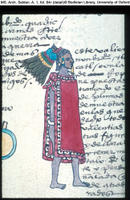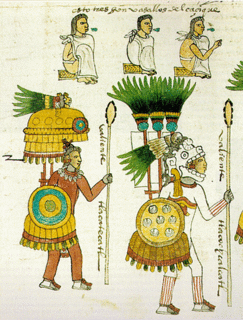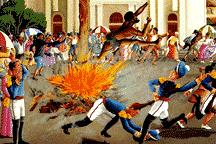
María Luisa Bombal's "The Final Mist" ("La última niebla"; a Spanish version can be downloaded
here) opens in the aftermath of a storm, a storm that "had shaken loose the roof tiles of the old country house" so that, the narrator tells us, "when we arrived, the rain was leaking in every room" (3).
The story's un-named narrator thereafter perpetually finds that she has somehow missed out on life's
Sturm und Drang, but tries to make the most of what gaps she can find in the barriers that pen her claustrophobically in.
Beyond, however, all is enveloped in a bewitching and befuddling mist that blurs any distinction between sleep and wakefulness, desire and drudgery: "I cross the garden almost at a run, open the fence gate. But outside, a fine mist hangs over the landscape like a veil, and the silence is even more immense" (7).
The narrator is trapped in a loveless marriage with her cousin Daniel. Neither offers the other any real affective contact. They know each other too well; they hardly know each other at all. Daniel, who initially casts his wife "the kind of hostile expression with which you always greet a stranger" (3), is before long "indifferent as a brother" (20); she for her part recognizes that he is still mourning the death of his first wife, but "move[s] away from him, trying to convince [her]self that the most discreet reaction is to pretend absolute ignorance of his pain" (5).
Even when her husband shows some little sign of affection, the narrator's constant feeling is asphyxiation, a sense that she is half-drowning in the water-saturated air of her fogbound environment:
For the first time since our marriage, Daniel fluffs the pillows for me. At midnight I wake, suffocating. I twist in the sheets for a long time, unable to return to sleep. Each breath leaves me gasping for a little more air. Rising, I open the window, lean out--but the atmosphere outside is just as intolerable. (13)
At least Daniel has a public identity, tasks to undertake, a social role, a name. His wife never attains these markers of belonging, of recognition. Much like the narrator of Bombal's
The Shrouded Woman (
La amortajada), her social position is liminal at best. She is in limbo.
If anything, indeed, the "shrouded woman" of Bombal's other major work is better placed than the narrator of "The Final Mist." She at least has children, and servants and retainers; she also has a personal history, youthful excesses to recall and relate; and she finds a strange power as she lies in her coffin, her dead form the object of attention, remorse, and regret, while she awaits "the death of the dead" that follows "the death of the living" (
La amortajada 116).
In "The Final Mist," by contrast, though "death seems a more accessible adventure than escape" (14), the narrator can't even die, and her attempt to kill herself is a failure full of un-noted pathos: "What more repugnant and useless gesture than the suicide of a woman approaching old age!" (46).
If the mist that drenches this story is neither one thing nor the other, neither liquid nor air, our protagonist can at least find some respite in the fully liquid environment of her garden pond, where "warm currents caress and penetrate" her while "the fresh breeze kisses the nape of [her] neck, cools [her] feverish forehead" (10). The pond is a
mysterious world where time seems to stop, where light is solid as a phosphorescent substance, where my movements acquire a knowing and cat-like gracefulness as I carefully explore the dark windings in that cavern of silence. (23)
Here her identity can dissolve, as she becomes one with her surroundings, "sink[ing] down," leaving only the trace of her presence, "a gentle eddy on the surface" (23).
The pond has its dangers: the gardener's son, Andrés, sweeping dead leaves off its surface, tells her "How pale you are. You may faint if you don't get out of the water soon" (25). But it is Andrés whose "livid corpse" is dredged up from the water, Andrés whose "ruined, putrid lips [. . .] death had rendered silent and water and time all but effaced" (34). And the narrator's reaction is to ask "now, how will I go on?" (34).
For the boy has been the one link, the one witness (she imagines) to the story that the narrator perhaps half-invents, half-dreams, half-experiences, a story of release, of one night of real sensation, real life. Inspired and interpellated by her sister-in-law's spectacular displays of desire and active sexuality, she tells a story of one night in the city when, out late walking, she met a young man whose shadow looms out of the fog, with whom she shares a wordless, consummated passion:
Under his attentive gaze, I lean back, a gesture that fills me with intimate well-being. Locking my arms behind my head, I cross and uncross my legs, each gesture bringing me intense pleasure, as if at long last my arms, my neck, my legs had a reason to exist. If this joy were the only end of love, I would consider myself well rewarded! (17)
So if Daniel has his mournful memory of his first wife, now the narrator has her own joyful remembrance of the one encounter that might make her life worthwhile: "with nothing but a single memory one can endure a long and tedious existence" (19).
But as time passes, and the fog of doubt and forgetfulness falls on her story, the narrator's fear is that she may in fact have imagined or concocted this memory from her own unfulfilled desire. Back in the city, she searches out the house to which she recalls her lover had taken her, only to find it inhabited by a widow whose blind husband died many years earlier. She flees the scene and wanders the city
unable to distinguish anything through the fog [. . .] abandoning all further struggle against my fate. The house and my love and my adventure--all had disintegrated in the dark swirling vapor that now blotted out the moon. (43-44)
There's no happy ending here. Bombal's is a story of frustrated desire, of languor and ennui, of a life that is no more than germinal, that never rises above the habitual except in the narrator's brief fantasy, cruelly dashed by the reality principle. "Perhaps that is best," she concludes, reunited with her husband, "following him":
Following him toward an infinity of insignificant tasks; toward a thousand trifling amusements; following him to live correctly--to cry from habit and smile out of duty; following him to die, one day, correctly.
Around us the fog settles over everything like a shroud. (47)
Or perhaps, perhaps the point is that her life
does rise, all too briefly and inconclusively, above the germinal; that the narrator
is interpellated, above all by her sister-in-law Regina, for whom she "feels envious of her suffering, her tragic love affair, envying even the possibility of her death" (45). By choosing to envy a melodramatic narrative of bourgeois adultery, rather than dwelling in her elemental pool, the narrator never achieves the true limbo of Bombal's "shrouded woman," never accedes to the immanence that Deleuze describes as
a moment that is only of a life playing with death. The life of the individual gives way to an impersonal and yet singular life that releases a pure event freed from the accidents of internal and external life, that is, from the subjectivity and objectivity of what happens: a "Homo tantum" with whom everyone empathizes and who attains a sort of beatitude. ("Immanence: A Life" 28-29)












